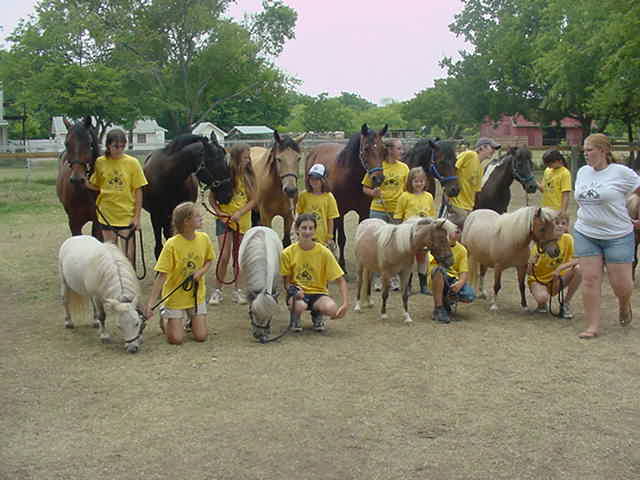Regarding competition from other sports, most kids are “social animals,” and like to do what their friends are doing. TBH, I’ve ridden at some barns that I thought were pretty lacking (which is why I left them), but they thrived for awhile simply because a group of kids made it their home base, and the kids liked to hang out and ride with their friends. But there’s a reason there’s a stereotype girls leave horses for boys as teens–if their friends aren’t riding and are doing other activities, that’s what they often want to do.
Even with parents–if they aren’t horsey, they like kids to do stuff that impresses their own friends. Again referencing crappy barns, I know parents who don’t know the difference between winning a blue ribbon at a schooling show and on the A-circuit, and as long as their kids are winning and happy, and that’s their only frame of reference, they don’t care about horsemanship or the kid advancing in the sport after middle or maybe high school.
But it’s much easier to have a child do a sport the child can play in high school, and not only have some of the expenses covered, but also the transportation and logistics. I realize there are some nutty hockey moms and baseball dads. But even if a more traditional sport is being pursued at a high level, on an independent traveling team, a hockey stick will never require a massive vet bill, and a baseball bat won’t need to be sold or leased out after the kid goes to college.
I agree that desire isn’t something we should try to manufacture. It’s a hard, heartbreaking, expensive sport, even for the very wealthy. It’s there or not. I do think it’s a bit sad that kids who have that desire in my area are having more and more limited options, though. Barns that might have had more of a barn rat culture are becoming increasingly show-focused, just to stay solvent, because it’s a source of money, and that requires a more limited range of competitive horses and riders, and professional barn staff.
The barns at the lowest end are backyard barns, and more often use kids as help–but the horsemanship and horse keeping at those barns can be sketchy and discouraging, as can the lessons. It’s not just kids aren’t jumping a certain height. It’s instructors who don’t really know how to teach and help a kid progress, and who don’t have suitable lesson horses for a student to feel encouraged enough to get up to jumping or dressage to a point where they might want to lease or own, if that’s a possibility.
I can only speak about my area, though. I don’t know of any barns charging $650 for board! Even $750 was low, and the last time I was actively pricing stuff was in 2018. Also, if you go for a cheaper barn, you might be sacrificing a needed indoor in winter, an outdoor ring that gets dragged regularly, and even basic blanket changing. In an area with cheaper land and more consistent seasons, I can see how it might be different.

 We settled on not having a full rate sheet online (she likes to be flexible, in some cases, depending on the person/horse), but saying “Lessons start at $X for X minutes.”
We settled on not having a full rate sheet online (she likes to be flexible, in some cases, depending on the person/horse), but saying “Lessons start at $X for X minutes.”